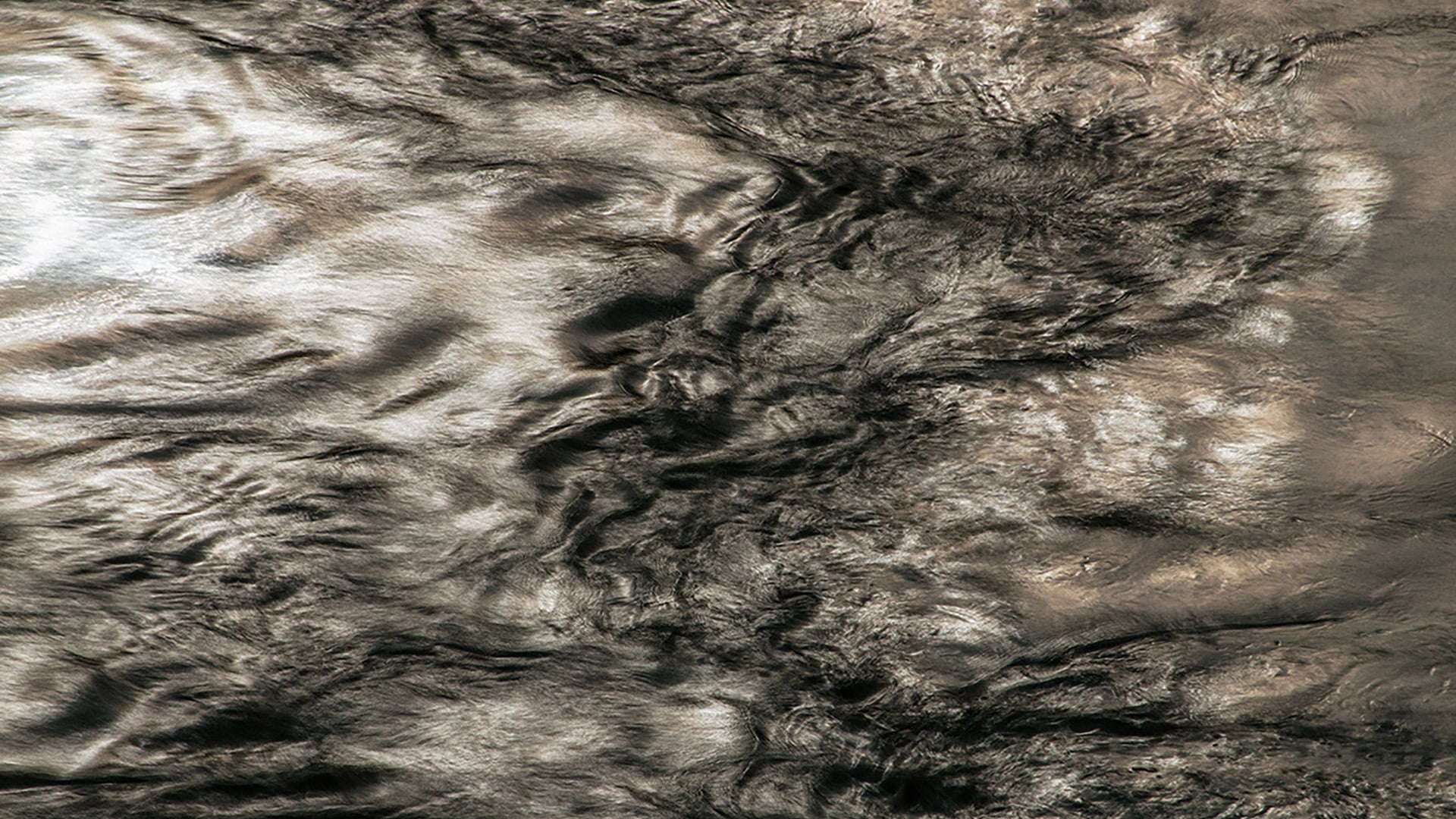
Chaumont-sur-Loire © Henry Roy
In the middle of autumn, springtime seems to reign over the Château de Chaumont-sur-Loire. Not even the November chill has managed to dispel the feeling of renewal that hangs onto the tiny white potted flowers placed in the entryway. “These are original images that have never been shown in France before. Some are even having their world premiere!,” exclaims the estate manager and the creator of the festival, Chantal Colleu-Dumond. Every year for three years, she has extended an invitation to six photographers who present a unique vision of nature or landscape. Some are local artists—this year, there are two projects directly tied to the Loire—others come afar, like the Mexican and Korean photographers who are among this year’s guests.

© Bae Bien-U
A dark wave
It is the work of the Korean photographer, Bae Bien-U, that opens the show. The artist had traveled to an uninhabited South Korean island, occupied by a towering volcano, to paint a striking, meticulously composed black-and-white portrait. His photographs are like caresses stroking the landscape: passing over the languorous curves of a hillside and bringing out, like a dark wave, its rounded peak.
Darkness also dominates in Juliette Agnel’s hypnotizing tableaus. Last year, the photographer brought out her portraits of Greenland icebergs; this year, she explores the desert in Sudan. Supported by Chantal Colleu-Dumond, who herself had visited the inaccessible northern part of the country, Juliette Agnel managed to produce a body of photographic work highlighting ancient ruins scattered across the desert. As the photographer points out, “these are magnificent and little-known places; much less visited than the ancient sites in Egypt, for example.”

© Juliette Agnel
Science fiction
Juliette Agnel sheds light on the beauty of forgotten structures in the land of black pharaohs—an architecture that blends with the lunar landscape of this rocky desert. To add to the mystery, Agnel grafted images of starlit skies onto her photographs. She took these pictures on the side, at night, and juxtaposed them with those of the ancient sites, taken by day. The nocturnal landscape looks almost imaginary. “I like to tell people I deal in science fiction,” says the artist who also admits to trying to reveal the power of these places. “These tombs were built on sites known for having strong telluric currents,” Agnel explains.
The Mexican photographer Juan San Juan Rebollar, in turn, is fascinated by plants. He lives surrounded by flowers and, day after day, observes their slow decomposition. He photographs them just as they are about to disintegrate and vanish into the space-time of their fading. The petals curl up and are bleached of color; all that remains is a relic of the inexorable dying. There is beauty in the wound of the passing time, and the flower is the medium of this passage singled out by the eye of the photographer known for his vintage pigments and the visual dance of decaying forms.

© Juan San Juan Rebollar
The Loire
Leaves, trees, and the subdued, white winter light: these are some of the elements that caught Henry Roy’s eye when he traveled to Chaumont-sur-Loire to do portraits commissioned by a magazine. Having fallen in love with the place, he asked Chantal Colleu-Dumond for an opportunity to return as an artist-in-residence. He was thus able to spend several weeks crisscrossing the estate on foot and to observe it change along with the seasons. “I have a made a portrait of Chaumont the way one portrays a person,” he says. His images are also accompanied by short texts included in book form.
The American artist Jeffrey Blondes is not at a loss for words, either, to describe his love for the Loire country. He presents a twelve-minute film that consists of several shots of the river. Glowing red sun hangs over magnificent vistas and lush-green wild grasses fill the horizon. “I hope the visitors will take time to look at these images,” says Blondes who used to be a landscape painter, much inspired by Claude Monet. It is essential to him to slow down, to counteract the exhausting pace of the city with the patient tranquility of nature.

© Jeffrey Blondes
The collection
Sometimes, however, it is nature that runs wild. This is, in any case, the impression we get from the work of Manolo Chrétien. He also photographs the Loire river, but focuses on the reflections on the water’s surface and its churning currents. By taking photos at a specific time to obtain backlighting effects, Chrétien is able to play with blacks and whites even though he uses color photography. His images show the river in turmoil, its incessant heaving and swelling. With exceptional finesse, they depict enigmatic matter that sometimes looks like animal fur, sometimes like forest fire.
Our visit comes to an end in a room newly opened to the public for the duration of the festival and dedicated to its previous iterations. As a producer of the photograph, the Château acquires a small collection every year. These works are exhibited here for the enjoyment of the public who may have missed the past festivals or would like to revisit them. The growing collection has earned Chaumont-sur-Loire a place among major venues for contemporary photography in France, while its festival is quickly becoming a not-to-be-missed event.

Fusions © Manolo Chrétien

Fusions © Manolo Chrétien

Chaumont-sur-Loire © Henry Roy
By Jean-Baptiste Gauvin
Chaumont-photo-sur-Loire
November 16, 2019 to February 28, 2020
Domaine de Chaumont-sur-Loire


